We all know what role a roof plays in preserving the overall structure of your building, and each part of the roof contributes its own version of protection. If you’re in need of a roof installation, then you need to become more familiar with some important parts of the roof to make sure they are included in the estimate.
At Miller Roofing and Renovations, we aim to guide homeowners with helpful knowledge on the structure of their roofs and homes. In this blog post, we will cover all the important parts of your roofing system and the role they each play.
#1 Roof Trusses or Rafters
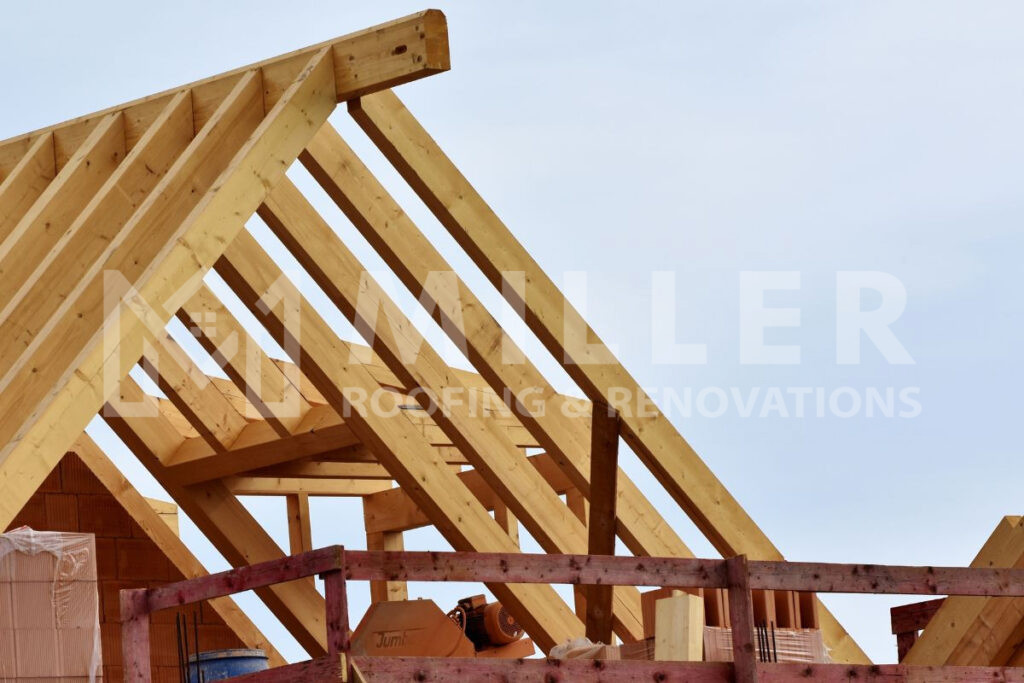
While trusses and rafters are not the same, they serve the same fundamental purpose: providing structure and shape to the roof. Both rafters and trusses offer a framework for everything else to be laid down. However, they have different designs, methods of construction, and installation.
- Rafters are individual slanted beams that extend from the walls to the roof’s peak, creating a pitched shape. They’re typically custom-cut on-site, allowing for more flexibility in design and potential attic space.
- Trusses are prefabricated triangular structures made of multiple wooden pieces joined together. They’re manufactured off-site and delivered ready to install, offering easier installation and potentially stronger support due to their webbed design. There are various types of trusses available for different kinds of roofs.
#2 Joists
Joists are another important component of a roofing system. They are placed horizontally on the beams to provide extra support. They are essentially the structural foundation for the roof deck that distributes the load of other roofing materials equally along the rafters and trusses.
Joists are generally made of wood, steel, or synthetic wood. It is very important to add a good depth of joists to provide a strong structure to your roof. Keep in mind that joists are also stronger when they have side support. This stops them from bending under pressure.
To figure out how deep a roof joist should be for your home:
1. Measure how long it needs to be in feet
2. Divide that number by 2 feet
3. Add 2 feet to the result, and this will give you the depth in inches
If you’re using steel joists, the companies that make them usually provide you with charts to help you pick the right joist for your needs.
#3 Roof Deck

The roof deck is the base layer of your roofing system. It is placed over the trusses to provide a flat surface for other roofing materials. It’s commonly made from plywood, planks, OSB, or metal in commercial cases.
The space between rafters or trusses will determine the thickness that the decking needs to be. Other conditions that will affect the thickness and strength of your chosen roof deck include the local weather conditions. You want a roof deck that is strong enough to handle any exposure to rain and UV rays when necessary, and prevent early decay of the roofing structure.
If you’re unsure of how to find the right one, you can always go over these requirements with your roofing contractor. A reputable roofing contractor will help you in choosing the right roof deck for your building.
#4 Underlayment
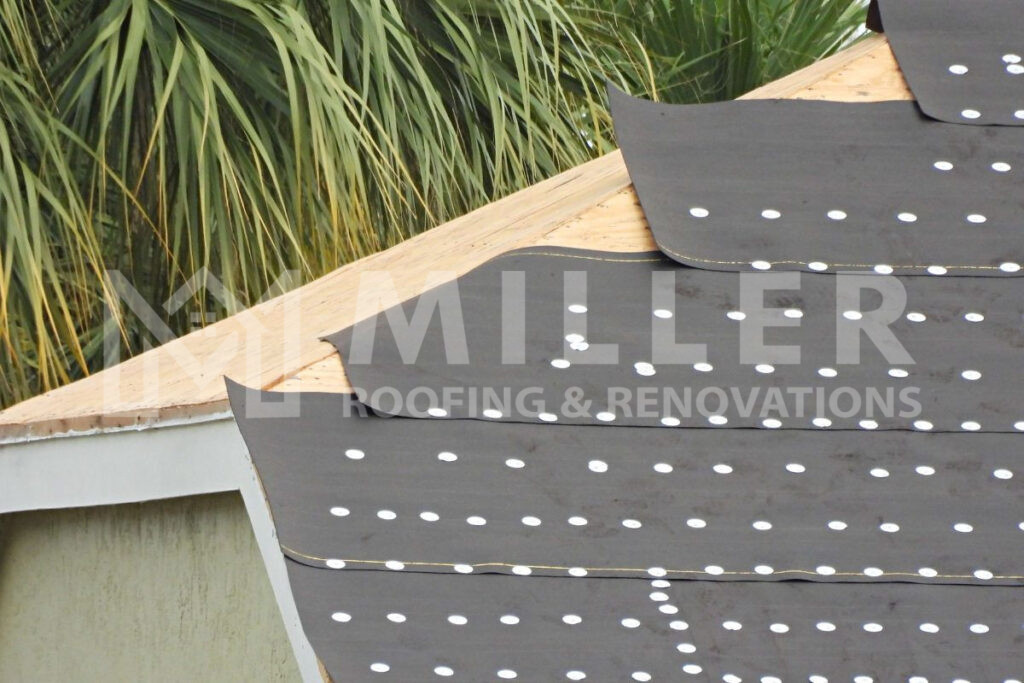
Underlayment is installed to cover the surface of the roof deck and provide added protection before the roofing material is installed. Choosing the right type of underlayment material for your roof is very important, and you can find it in different versions such as synthetic, perforated, or asphalt-coated felt.
When a sudden storm damages the outer layer of your roof, this layer protects the other underlying materials. Proper placement of the roof underlayment is important for your roof’s structural integrity and stability. Any gap can lead to water penetration and leaks within the interior of the building. That’s why we always recommend hiring a reputable roofing contractor in your area, as this will minimize the risk of faulty installation.
#5 Ice and Water Shield
An ice and water shield isn’t always mandatory, but it can be extremely beneficial to have on your roof, especially if you live in an area with frequent cold weather and the threat of ice melt. This underlayment is made to be waterproof and is installed along the roof’s edge and other vulnerable areas, such as roof valleys, not necessarily the entire roofing system. The shield is typically a self-adhered membrane that creates a watertight seal around nails and other penetrations of your roof. It is also generally made of rubberized asphalt.
Proper installation of an ice and water shield can increase a roof’s lifespan and help prevent interior damage. If you live in an area with harsh winters, you should ensure your roof includes this vital protective layer.
#6 Roof Covering/Roofing Material
The roof covering is the primary layer of your roof that is visible from the outside of your building. It is the primary material that is directly exposed to the weather and other outer elements. The choice of material depends on your type of roof and your personal preferences.
Homeowners can choose from asphalt shingles, metal roofing options like aluminum, steel, or copper, and more! On the other hand, if you have a flat roof, you’ll typically be using materials such as EPDM (a rubber membrane), TPO (thermoplastic polyolefin), or modified bitumen.
It is essential to consider the quality of the material you choose for your roof covering. Low-quality materials will cause the roofing system to deteriorate quickly, so consider your local climate, and level of maintenance you’re willing to take on in order to ensure a sound structure during harsh weather conditions.
#7 Flashing
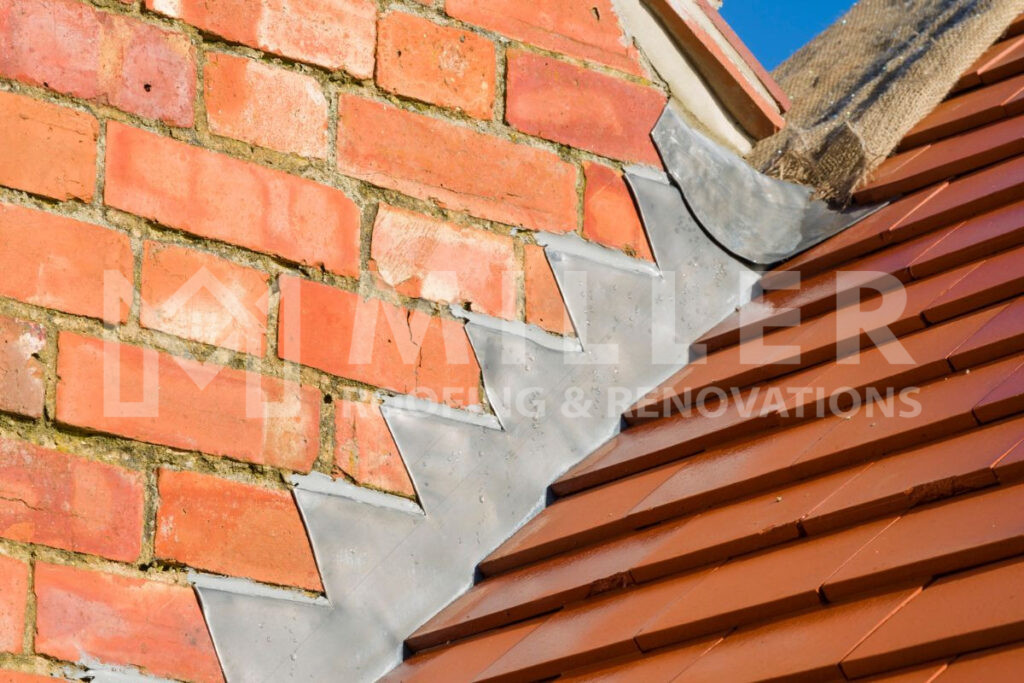
Flashing is a thin piece of waterproof metal installed in areas of your roof that are prone to leaks, such as around skylights, dormers, chimneys, and where the roof meets walls. It comes in various materials, such as copper, aluminum, or galvanized steel, and proper installation of this roofing feature is essential for maintaining a watertight seal and preventing expensive water damage to your home’s interior.
#8 Roof Vents
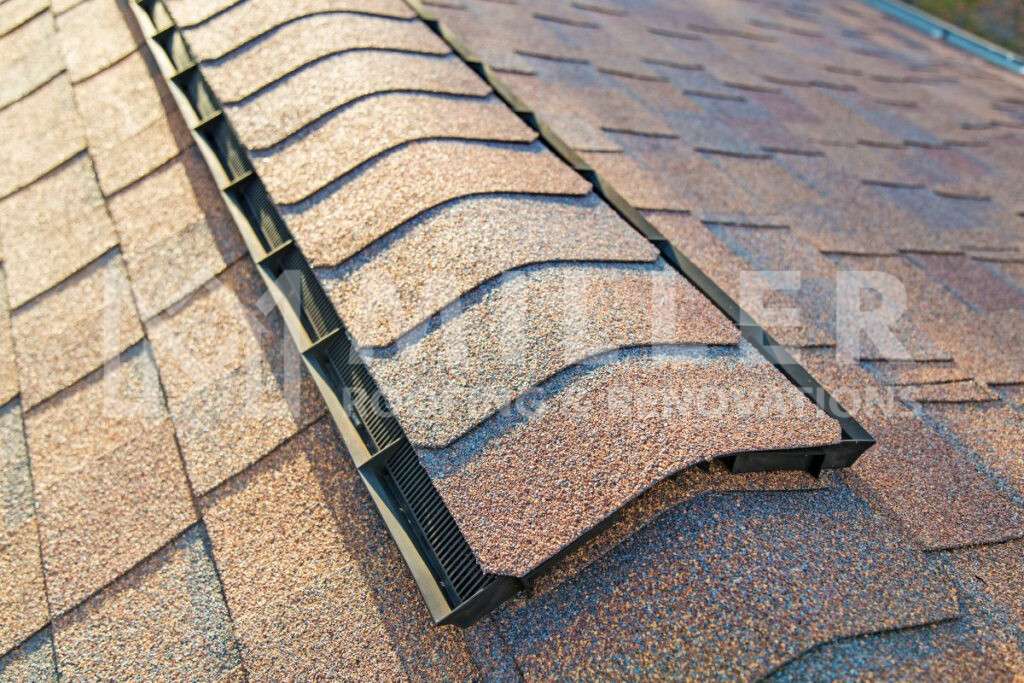
Roof vents help you maintain a balanced flow of air in your home and reduce hot, humid air that can otherwise build up in the attic. They are available in various forms, including soffit, gable, and turbine vents. Proper placement and sizing of these components are crucial in order to maintain sufficient airflow inside your building. A well-ventilated roof helps regulate temperature, reduce moisture, and increase the lifespan of your roofing materials.
#9 Eaves
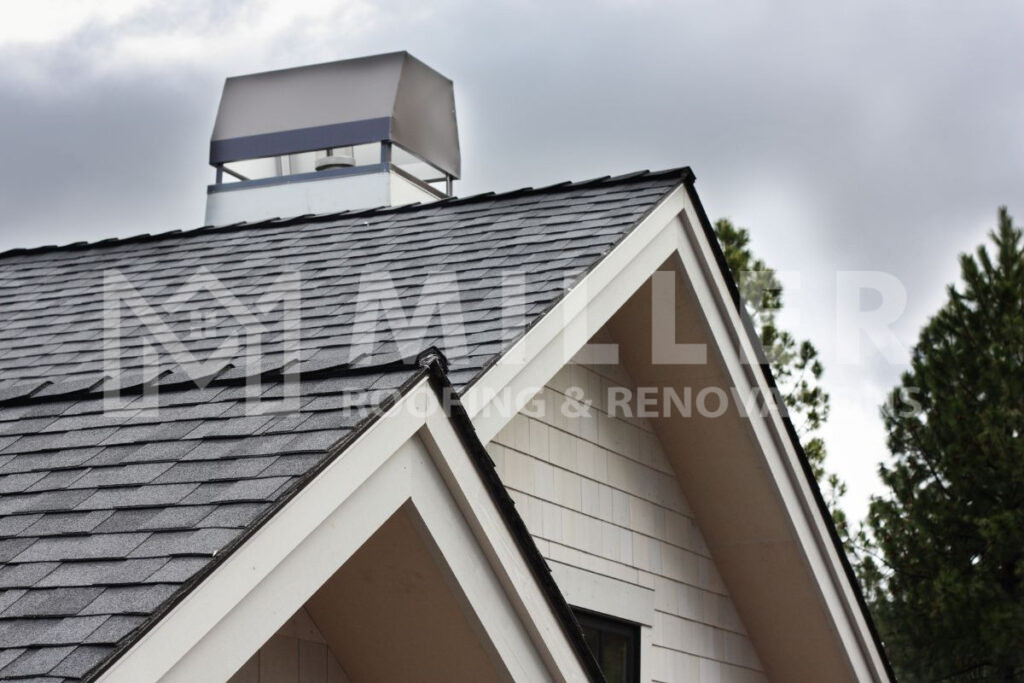
Eaves are the part of your roof that extends over the side of your home. They play a significant role in your home’s overall appearance and protection and vary in design from simple overhangs to more elaborate structures with decorative brackets. As a key roofing component, eaves also help direct rainwater away from your home’s foundation and provide shade to the windows.
#10 Gutters and Downspout
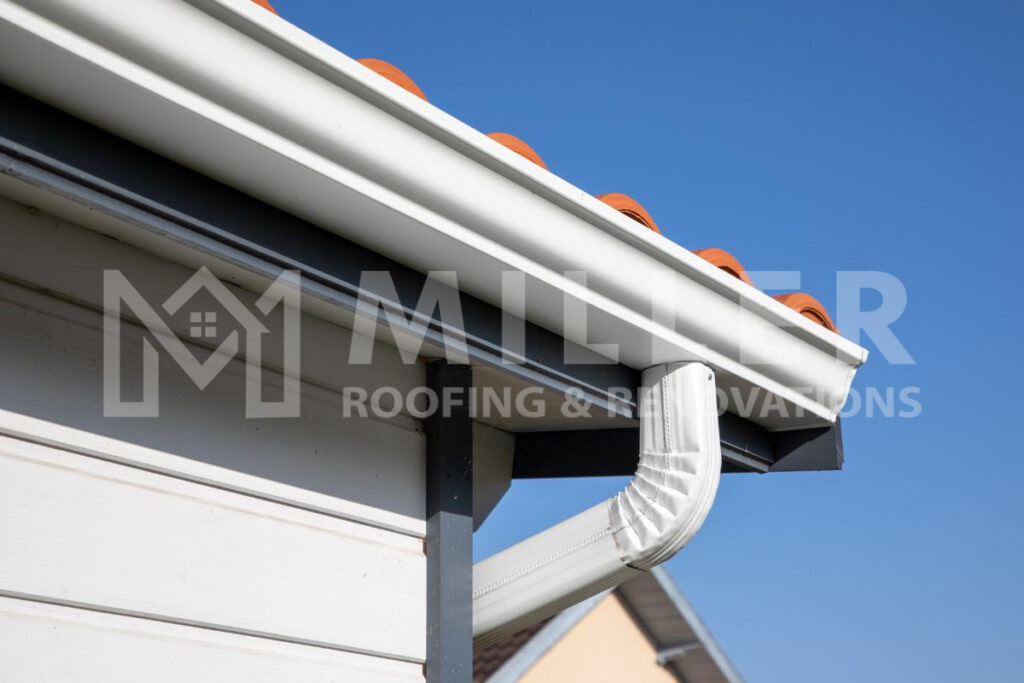
Gutters and downspouts are important parts of a roof’s drainage system, working together to protect your home from water damage.
Gutters are long, narrow channels that run along the edges of your roof. They collect rainwater, preventing it from pouring off the roof in sheets and damaging the siding or foundation. Gutters can be seamless or sectional and be made of various materials, such as aluminum, vinyl, or copper. To ensure the durability of your roof, choose the right gutter style and brand.
Downspouts are the pipes (placed vertically) that connect to your gutters. They channel the collected water from the gutters down to the ground and away from your home.
Together, these roof components form a critical water management system. They smoothly channel water from your roof, preventing leaks and structural damage. By guiding water away from your home, gutters and downspouts also protect your home’s exterior paint and siding.
#11 Soffit
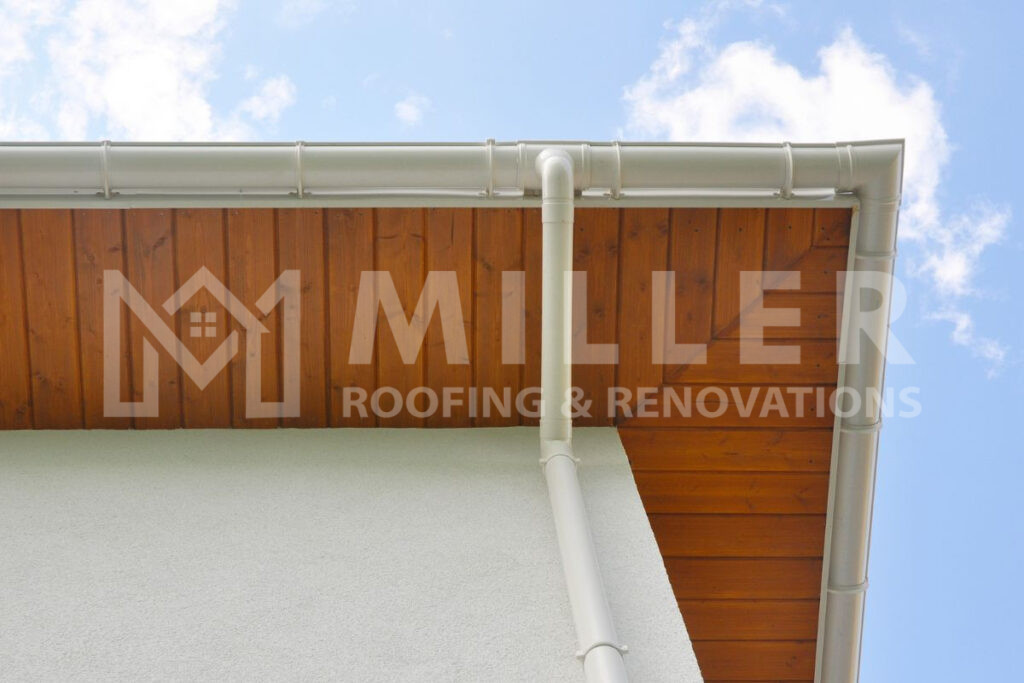
The soffit is another important part of a roofing system. They are located along the underside of the roof overhang or eaves. Soffits serve both functional and aesthetic purposes.
Functionally, soffits protect the rafters and other roofing components from weather damage and pests. Many soffits are ventilated, featuring small holes or slits that allow air to circulate in the attic space and push out hot, humid air. This ventilation is crucial for regulating temperature and moisture levels, which helps in preventing mold growth and extends the life of the roofing materials.
#12 Fascia
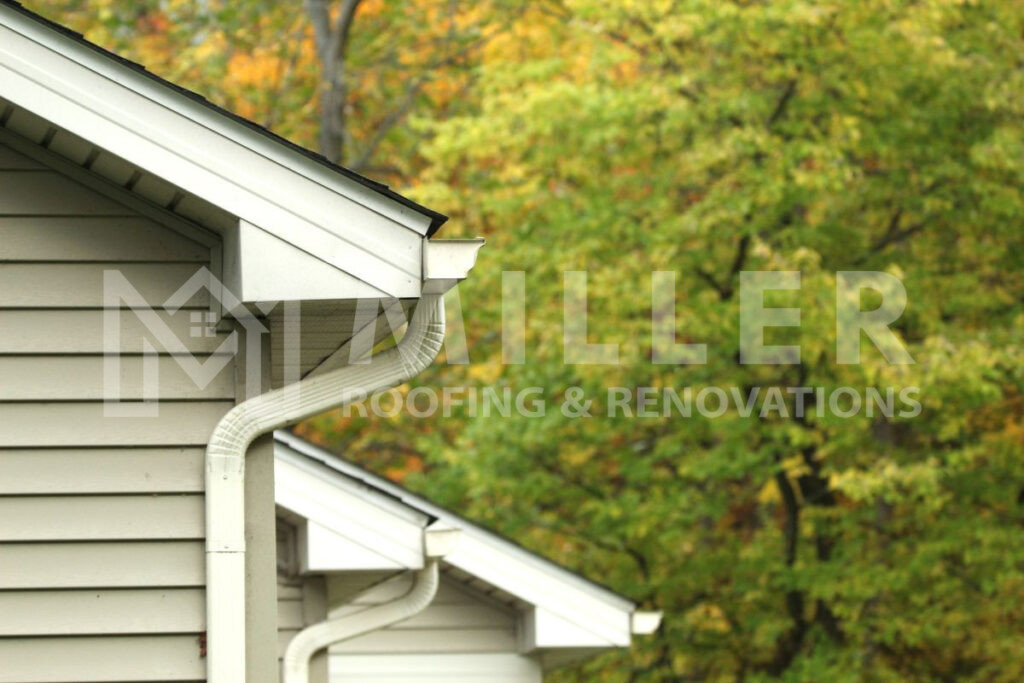
The fascia is a horizontal board that runs along the bottom edge of the roof, covering the ends of the rafters or trusses. It provides enhanced protection from leaks and pest infestations, generally made of wood, metal, PVC, or vinyl.
They are a commonly hidden roofing component that serves multiple purposes, from providing a clean, finished look to your roofline to acting as a mounting point for your gutter system. Overall, it serves the important purpose of shielding your home from water damage by preventing moisture infiltration.
When maintaining your roof, it’s important to inspect the fascia regularly along with other roofing components. A damaged fascia can lead to issues with your gutters and potentially allow water to enter your home’s structure.
#13 Roof Valley
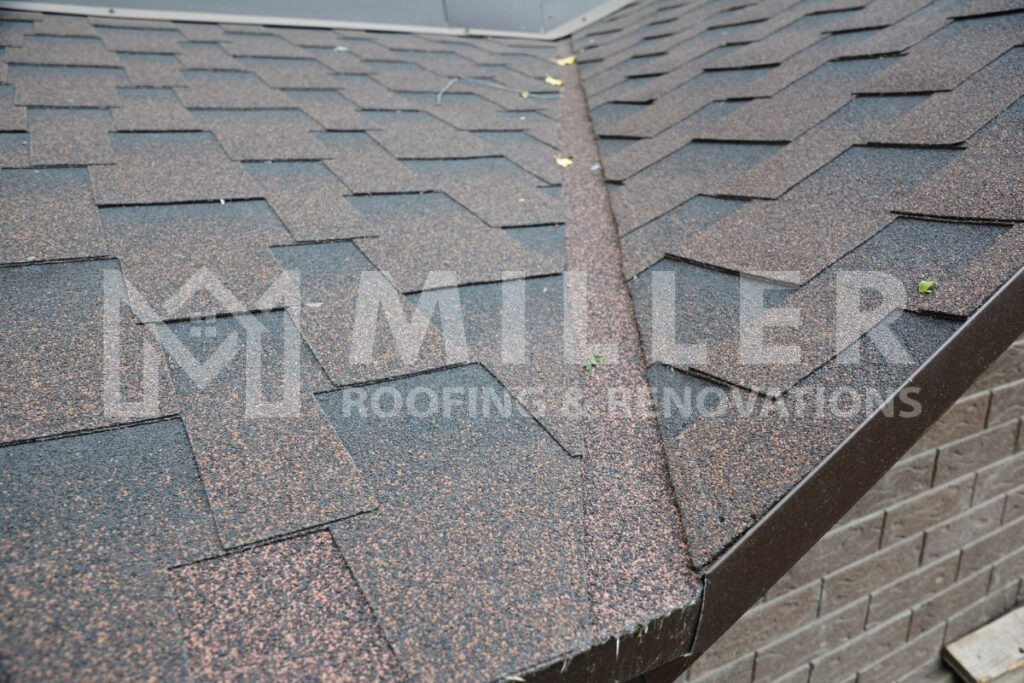
A roof valley is another crucial component of a roof where two sloping sections intersect, forming a V-shaped channel. This important part directs rainwater and melting snow into the gutters and away from the structure, preventing water damage.
Roof valleys require careful installation and maintenance for proper water drainage. As one of the key roofing components, valleys are typically lined with metal flashing, along with an ice and water shield to provide extra protection against leaks.
Valleys are supported by valley rafters in roof framing components, which help distribute the roof’s weight. Properly designed and installed roof valleys contribute significantly to the overall performance and longevity of the roofing system.
#14 Roof Ridge
A roof ridge is a crucial component of roof framing, forming the highest point where two sloping roof planes meet. This horizontal line runs along the peak of the roof.
In many roof designs, it acts as the spine of the roof, distributing weight and providing stability to the entire structure. Proper installation and maintenance of the ridge are important for the overall integrity of the roof. Understanding the function of the roof ridge is crucial for homeowners and builders alike when considering roof repairs or construction.
#15 Vent Pipe
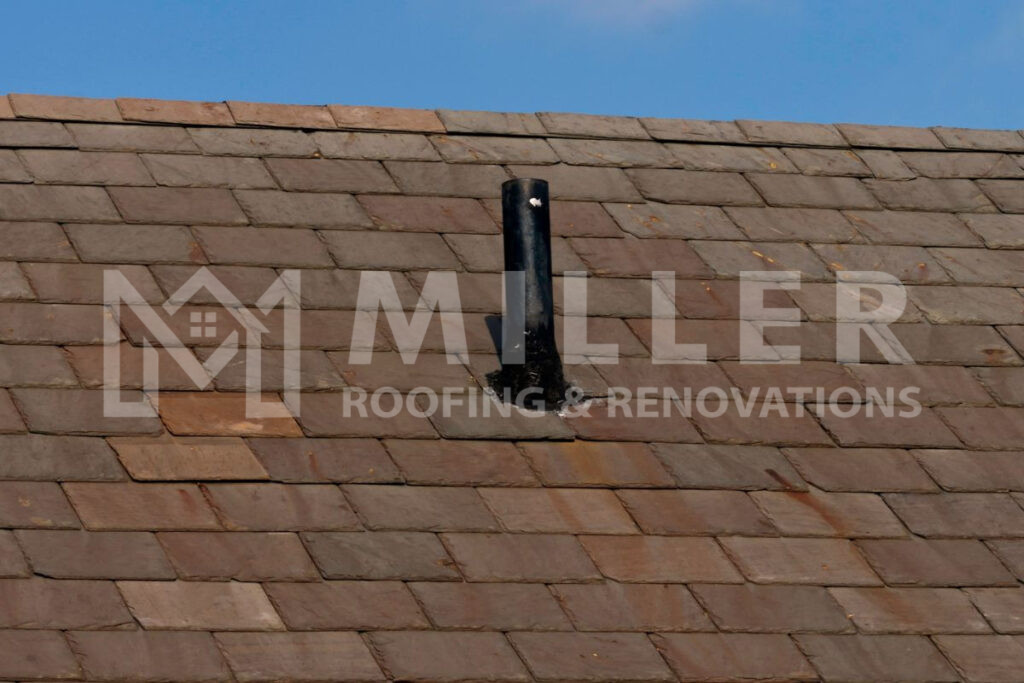
A vent pipe connects to the home’s plumbing system and allows sewer gasses to escape and maintain proper air pressure in the plumbing lines.
Vent pipes typically protrude through the roof and are sealed with special flashing to prevent leaks. They play a crucial role in the overall functionality of a home’s plumbing and ventilation systems.
Properly installing and maintaining vent pipes is vital to prevent odors and ensure efficient drainage. When inspecting roof parts, check that the vent pipes are intact and properly sealed.
#16 Insulation
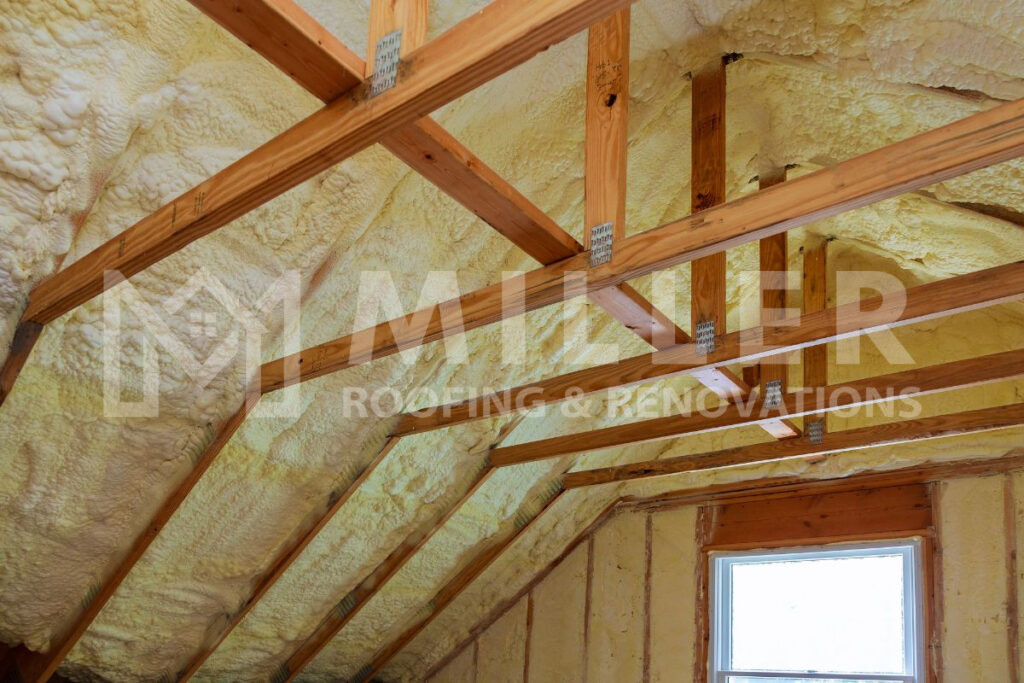
Roof insulation is an important part of a roof that helps keep your home comfortable. It either sits above or below the roof deck and works to keep heat inside during cold weather and outside when it’s hot. Insulation comes in different forms, such as fluffy material or firm boards, and is placed among other roof framing components.
Do Flat Roofs Have The Same Components?
While both flat and low-slope roofs share key elements such as a roof deck, underlayment, and roofing materials, flat roofs typically do not include features like eaves or hip designs that are common in pitched roofs.
Flat roofs generally incorporate components like a waterproof membrane (such as EPDM or TPO), which is crucial for preventing water infiltration, especially since they lack the natural drainage of sloped roofs. Additionally, these types of roofs often have internal drainage systems, including scuppers and drains, to manage water runoff effectively.
Other specific components may include a parapet wall, which helps protect the roof edges and provides a barrier against wind-driven rain. Flat roofs also have tapered insulation systems that are designed to avoid heat loss and improve energy efficiency while creating a slight slope on the roof that optimizes water drainage.
Call Miller Roofing and Renovations For A Roof Installation In Memphis, TN
If you are looking for a roof installation in Memphis, TN, and the surrounding areas, we are here to help. As one of the best-rated roofing and home renovation contractors, we aim to provide top-quality roofing services to both homeowners and businesses in Tennessee.
Trust us as your reliable roofing partner, and our professionals will make sure to serve you with quality results. For more information or for a custom quote, feel free to call us at (901) 457-9405.



 FREE ESTIMATE
FREE ESTIMATE